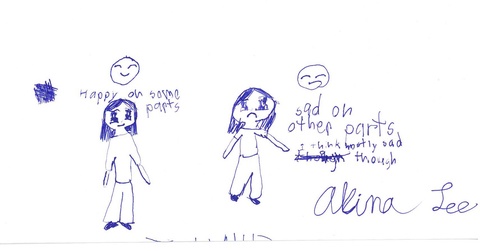This year was my third Tule Lake Pilgrimage and it was extra special for me. An important event at the pilgrimage is an “Intergenerational Group Discussion,” where attendees are assigned to be a member of a group. Our group had 12 people in it, including two facilitators and me. The youngest members of our group were eight and eleven years old. Sansei adults made up the rest of the group. I was designated as the group’s “Resource Person.” According to the pilgrimage organizers, a Resource person is someone who was incarcerated in a U.S. Concentration Camp during WWII. I was incarcerated in Tule Lake from 1942 to 1943. The role of the Resource Person was to inform the group of his/her experience while in Tule Lake. Our family was transferred from Tule Lake to Jerome when the government segregated internees in 1943; then my family was transferred again, to Heart Mountain because Jerome was the first camp to permanently close. We were finally released in August, 1945.
My story:
I volunteer at the Japanese American National Museum. Visitors have asked me “How old were you in camp and how was it?” My response is, “I was 10 years old when I was incarcerated in Tule Lake Concentration Camp. I had fun and a good time in Tule Lake because my parents and their Issei friends made life “as normal as possible for us kids.” They did not say “Woe is us” or complain about what was happening. I learned to play basketball, football, and softball with my newfound friends."
In 2016, seventy-four years later, I learned that my mother had a tough life and had suffered in camp. When my brother Dan heard that I was going to the 2016 Tule Lake Pilgrimage, he told me what happened when he and my mother went to visit Tule Lake in 1972. They decided to stop at Tule Lake on their way back from visiting a family friend in Oregon. Dan said, “When we reached Tule Lake, Mom started to cry and did not stop until we left and Tule Lake was out of sight.” Dan made the decision to leave without stopping at Tule Lake because of our mother’s reaction.
It took me seventy four years to learn that my mother led a tough, unhappy life and had suffered trauma while we were incarcerated. She never showed it while we were in camp or after camp. My father passed away in 1972; our family never once discussed or said anything about camp.
After I told this story to my group, the moderators asked everyone to express their feelings about my story. Included in our group were two youngsters, Takumi (11 years old), Akina (8 years old), and their mother, Lisa Nakamura. When Lisa asked them how they felt about my story, Akina responded in a low voice to her mother, but did not respond verbally to the rest of the group. Other members of the group then expressed their feelings.
After everyone shared thoughts, we noticed that Akina was drawing pictures. Akina had expressed her feelings through art. Later, Lisa showed us a sketch Akina had made of two women. Next to one woman, she wrote “Happy on some parts” with a smiling face. Next to the second woman, who wore a frown, she wrote “Sad on other parts. But, I think mostly sad though.” When I saw the picture, I said to myself, “Wow, Akina heard my story.” My immediate reaction was that I wanted the picture, so I asked Akina if she would autograph and give me the picture. The picture is one that I shall cherish and keep to help me remember how special this year’s pilgrimage was for me.

I also learned that Lisa Nakamura is a clinical psychologist who wrote a dissertation (working with psychotherapist, Dr. Satsuki Ina) about the impact of the Tule Lake Pilgrimage on former incarcerees and their descendants. She works primarily with children, youth, and young adults, which is why she had the idea to have Akina draw her response to my story.
During breakfast on Monday morning, the day of our departure, Lisa showed me four other pictures that Akina had drawn. She explained Akina’s thoughts as she drew each picture. Later, Lisa scanned and sent me copies of the four pictures with text to describe them via email. I was “blown away” when I read the descriptions and Lisa’s comments. Her description of each drawing showed that Akina had not only listened to me, she had really heard what I said. I was and am honored that Akina expressed her feelings and interpreted through her art what happened to my family and me during our incarceration.
Lisa wrote me after the pilgrimage: “Takumi told me later that the saddest thing was the parents. That they had to pretend that camp was fun for their children.” For myself, the reaction of Takumi and Akina to my story and how it affected them was the highlight of the pilgrimage. I was honored and pleased that Takumi and Akina listened and heard my story. Their thoughts and reactions made this year’s “Intergenerational Group Discussion” very special, one that I will never forget. I recommend that you read Lisa Nakamura’s article relating to Akina’s drawings as well, which will be published next week on Monday, September 10.
© 2018 Richard Murakami




